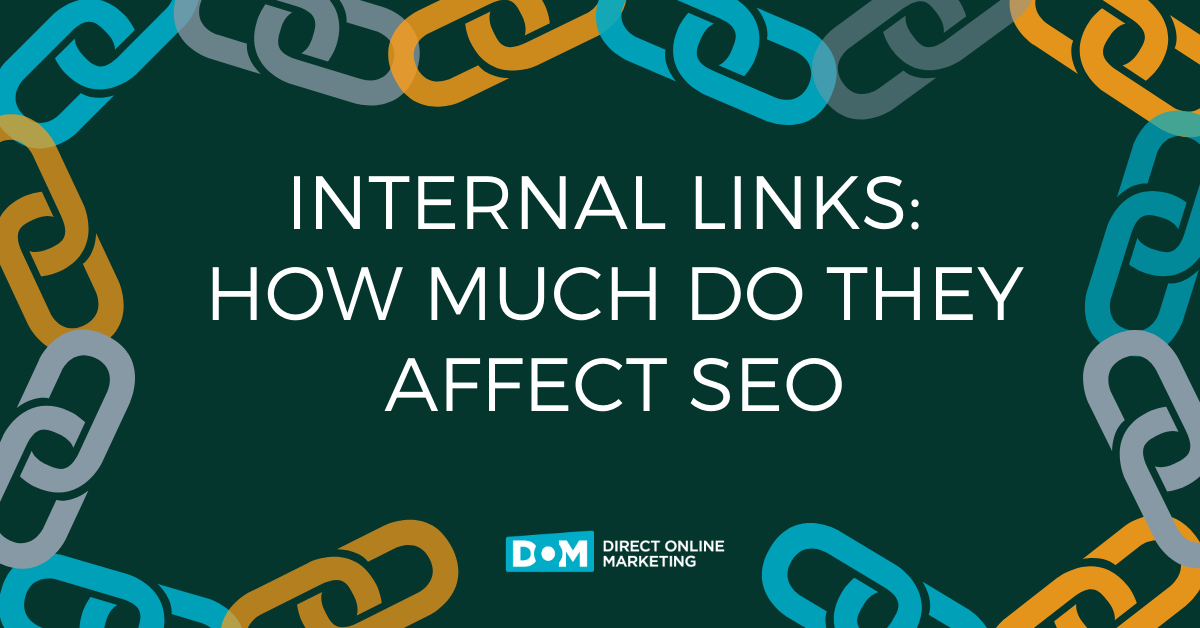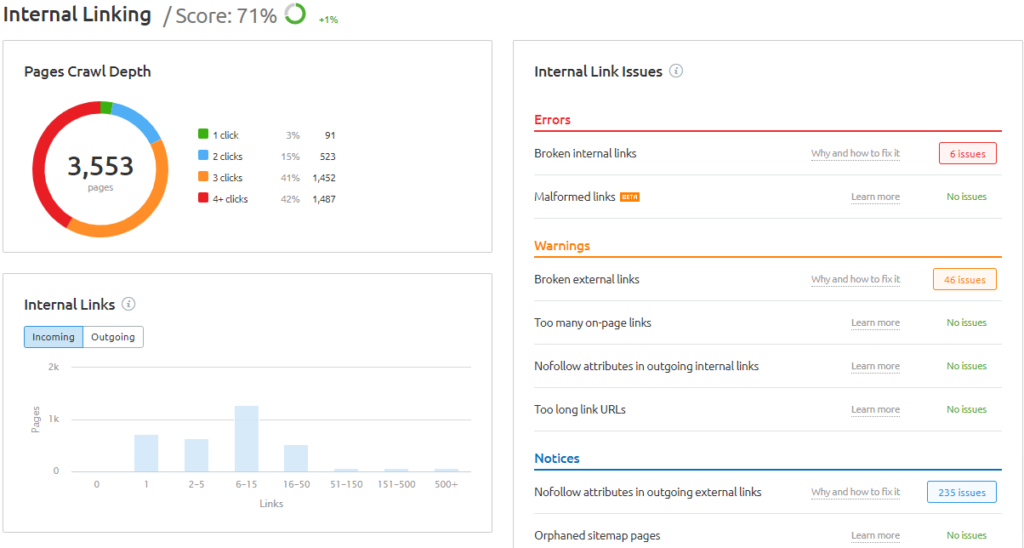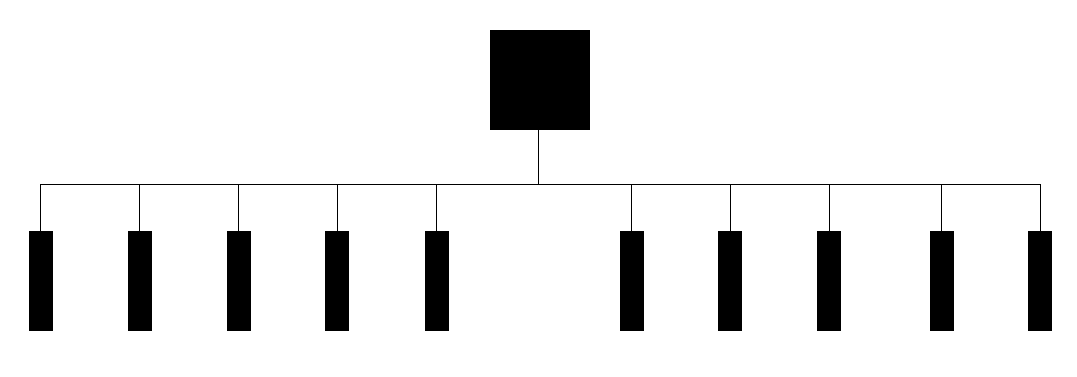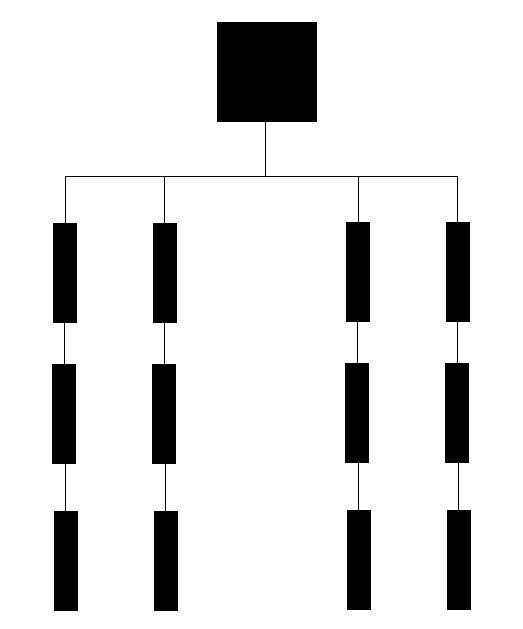
Updated December 11, 2024
Does Internal Linking Help SEO?
Every business on the planet wants its website to rank number one for every keyword that relates to its business. Leveraging internal links for SEO is one of the easiest ways to increase your changes of locking in that number one ranking.
And why not? Billions of users turn to Google on a daily basis to answer their questions or find what they’re looking for.
A problem, however, lies in the simple fact that the internet is a huge place. Even Google only remains the top search engine worldwide because it quickly and consistently provides value to users. If Google didn’t efficiently serve users content highly relevant to their search queries, people just wouldn’t use it, and more than likely, another search engine would claim its dominant share in the market.
Though Google’s algorithm continues to be opaque, we know that clear, consistent web design matters more than ever. The foundation of your website is the content, but the connective tissue is the internal link. Internal linking for SEO is crucial to far more than just your rankings, as it improves user experience and demonstrates an understanding of why your users are there in the first place. Let’s break down the “how” and the “why” of every question you might have on SEO, internal links, and best practices for implementing them on your own website.
Insights On Every Question You Have About SEO and Internal Links
- What Is An Internal Link? What Are The 4 Types?
- Why Are Internal Links Important?
- Do Internal Links Help SEO?
- How Many Internal Links In A Page Is Best? How Many Is “Too Many”?
- What’s The Difference Between Outgoing And Incoming Internal Links?
- How Many Incoming Internal Links Should My Page Have?
- Hierarchy
- Internal Links
- Link Juice
- Internal Links Are Important
What Is An Internal Link? What Are The 4 Types?
An internal link is created when a link is added from one page on a website to another page on the same website. These are all internal links because they share the same root domain.
There are a variety of ways you could breakdown the different types of internal links. Here at DOM, we define them based on the general location of where the internal links are placed and their purpose for being placed there.
- Navigational Links: these links are commonly found at the top of a webpage or in an HTML sitemap. They are used to help visitors move around your site to the most important or most trafficked destinations. More than likely, you’ll have navigational links to pages that show off your products, services, contact information, and other standard information that a visitor would expect.
- Footer Links: these links serve a similar purpose to the navigational links. Many times, you will find a strong correlation between the links included in the navigation of a website and the links included in the footer. That said, you may also find footer links include important operational pages, too, like a Privacy Policy, Terms & Conditions, or a Refund Policy for Ecommerce sites. These pages may not command the same level of authority that you’d find in pages linked in the heading, but are still primarily made up of content that an average user may want to see.
- Sidebar Links: these links had their heyday in 1990’s and 2000’s when the majority of internet usage was tied to a desktop or laptop computer. With today’s modern web design being focused on a mobile-first, responsive experience on an iPhone or Android device, these links are less prevalent, though they can still be well-implemented if there is a focus on user-friendliness in both mobile and desktop environments. You will commonly find that sidebar links point users to areas of a website that are complementary to what they are viewing – like popular blog posts or related products to what a visitor is currently viewing. These links, in SEO terms, are less of a direct follow-up to the page in question, and more focused on content that may be of assistance to the same user.
- Contextual Links: these links serve as a reference point to other related content around the web. Contextual links may be indicated by a “click here” call to action or a “read more” statement. Say you own a sporting goods ecommerce site that points you to the company blog. On that blog, there is a post compiling the top 10 basketball shoes. Since each shoe is available for purchase on the site, you post a direct link to each individual product page in an effort to turn readers into potential customers. These are of particular importance, as you can demonstrate through your content how two pages are connected, both in terms of site structure and the topic in question.
Basically, any link on a page that takes a user to a different page on the same website is considered an internal link. This includes subdomains, so if you’re in a scenario where you need to build a subdomain for your site, internal links to and from the subdomain can help Google to understand and categorize the subdomain in relation to your primary site.
What is the Impact of Internal Links?
Internal links are usually much easier to create and manage than external backlinks, which are created when another website links out from their domain to anywhere else on the web.
Because of their simplicity, they are often overlooked, but a solid internal linking strategy can have a huge impact on your site’s rankings and performance in organic search.
If you have a blog post that gets great traffic, but none of it seems to be pointed toward relevant service/product pages or the homepage, internal links may help to push some users toward those pages with a better likelihood of converting.
On the flip side, if your product/services pages are doing well, but you’re not getting traffic to the content you create, it may be that Google hasn’t indexed your blog yet, which internal links may be able to remedy to some degree.
How Do Internal Links Help SEO?
Not only can a defined internal link structure contribute to a positive, intuitive user experience, but Google can also better understand the content on a site with clear, ordered internal links.
One of the biggest impacts of internal links is that once Google has a greater understanding of the relevance of the content on your site, it can rank your content higher. It’s no coincidence that Google Search Console has a report specifically dedicated to internal links.
The internet is gigantic and is growing every day. The service that Google provides is a simplified way to navigate this seemingly infinite space by providing pages that are relevant to user searches. Before search engines like Google, the best way to navigate the web was to use directory services that categorized websites by content type (think Yellow Pages). A few of these directories still exist, but they are mostly simply too large to be useful, and do not provide enough specificity to be of use in most scenarios.
How Many Internal Links On A Page Is Good? How Many Is “Too Many”?
If you clicked down to this question, hopefully you did so because you’ve just found a post that is getting some rankings or traffic. If your goal is to find out how many contextual internal links you should place in a page to benefit other priority pages on your site, this is the right place for you.
The impact of links in SEO can vary depending on a number of other factors, but while we’re staying focused on internal links, let’s talk about the best practices to follow so that your traffic will disseminate throughout the site as expected.
Side note: if you’re trying to determine how many internal links a page on your website should receive, this isn’t where you will find your answer. But keep scrolling, please, because we address that below.
How Many Internal Links On A Page Is Good?
Historically, conventional wisdom among the SEO community was that the optimum number follows this easy guide:
Every long form piece of content and all important pages should have around 3-4 internal links pointing out to other pages, with an additional link per 300 words or so.
Granted, these were loose guidelines.
Then, of course, there was also the equivalent of the “it depends” answer, too. Many SEOs would tell you that you have to add more or use fewer links depending on the actual content itself.
How Many Internal Links Is Too Many For SEO?
So, if you’re trying to determine the precise, accurate number of internal links you need to have pointing to your top pages, we hate to be the ones to break this to you…
There is no right answer.
Seriously, have you ever paid attention to a Wikipedia page before?

If you ever have a question about whether or not you should add an internal link from one page on your website to another, try asking yourself if placing that link improves the user experience.
If it’s useful, do it.
If it’s not useful, don’t.
If the internal links seem to clutter the page, it may be worth adding an important link as a button or something along those lines to make it stand out from the rest. The key takeaway here is that the link must be useful, otherwise it will be detrimental.
What’s The Difference Between Outgoing And Incoming Internal Links?
Every link on a page that goes to a different page, no matter whether that page is internal or external, is called an “outgoing” link. If this sounds like every link on a given page, you’d be right! Every hypertext link we make is considered an “outgoing” link.
Using the page you’re reading for reference, every hyperlink we create, including this snazzy one pointing toward our SEO services page, is considered “outgoing” from this page. If another blog article is particularly relevant to this content, the link pointing to this page would be considered an “incoming” link.
An incoming internal link refers to links that come from elsewhere to a given page. Therefore, the subject of our next section is these “incoming” links.
How Many Internal Links Should I Place To A Page On My Site For SEO?
If you’ve read down this far, you know how to begin a strategy to add internal links pointing to your top website pages. For most websites, and for most pages on those websites, the optimum number of links that point back to your content should be around 20. As with everything else related to SEO, this number will get slightly smaller or larger depending on the size of your site. If you have a ton of pages on your site, it may be worth it to add more, whereas a smaller site would benefit from these links being optimally placed, rather than having a large quantity of them.
The tool we use on our travels through the valleys of SEO, SEMRush, has a bunch of resources we can use to see the entire link architecture of a website (some of which also include external links). You can get a succinct internal linking score that gives you an overall target to aim for, while also including a series of suggestions for how you can improve your website’s score. A high score equals a good link profile, and any SEO tool with its price will have something similar.
As you see in the above example screenshot, the example website has an internal linking score of 71% overall, with a whole bunch of major issues presented for us, the stewards of the web, to fix. And that’s not even the whole list!
Another tool we use is Yoast SEO‘s integration with WordPress. It’s a handy way to do a lot of different SEO operations, often allowing us to see the parts of our pages that have the most impact on our organic rankings. If you don’t believe us about how important internal links are, you can believe Yoast–you can see, at a glance, exactly how many outgoing and incoming internal links each of your blog posts currently has, like so:
Those two icons on the right? Those are internal links. You can even sort your pages by the information in those columns so you know which blogs have the most (or least) internal links flowing into them and flowing out. This can help you determine which pages need internal linking the most, allowing you to prioritize pages as you work through your website.
As you get to know what your link setup looks like, you will start to see a pattern emerge. This pattern of links is called the hierarchy.
Features like this are just one of the reasons Yoast SEO is included in our exclusive list of the best WordPress plugins for SEO.
SEO Internal Linking Hierarchy
The hierarchy of a website is important because it lets a user understand where they are on your site. Most websites are not single-page sites and therefore require some sort of directory-like structure for their content. Information is best understood when categorized into groups of similar pages.
For example, if you were selling vehicles, it would make sense to categorize them in a number of ways, with pages devoted to specific manufacturers, body styles, model years, etc. The key thing is to ensure that there’s a logical grouping of content in such a way that a user should intuitively understand it.
If your website does not have a logical grouping of content, Google’s site crawlers may not be able to properly discover and index all your web pages. More importantly, users will likely struggle to navigate your site and quickly bounce.
Websites tend to fall under one of two hierarchical content grouping formations: flat and deep hierarchies.
A flat hierarchy is a website that has a larger number of categories than sub-categories. This type of web site is said to be “wider than it is tall,” in terms of graphical link structure. This ensures a relatively small crawl depth, but it may be harder to navigate in terms of logical groupings.
A deep website hierarchy is a website that is organized into many sub-levels of information. Content is said to be more discoverable when it’s not hidden under multiple hierarchical layers. Deep hierarchy website structures are considered more difficult to use. This is likely due to how the human brain stores information and processes location.
Imagine your website as a sprawling, multi-level library, where each webpage is a book on a shelf. The entrance to this library is the homepage, the most accessible point for visitors, akin to search engine crawlers starting their journey.
Internal links serve as the library’s system of staircases and corridors, connecting various sections and floors. Crawl depth refers to how many staircases (clicks) it takes to reach the furthest book (webpage) from the entrance (homepage). A well-organized library ensures that no book is too many staircases away, making it easy for visitors (and crawlers) to explore the entire collection efficiently.
Without sufficient and strategically placed staircases (internal links), some books might remain undiscovered or take too long to reach, mirroring webpages that are buried too deep for search engines to index effectively.
This means that neither a flat nor deep hierarchy is necessarily better than the other, as long as internal links are arranged in such a way to make it all easily accessible.
Both types of websites can utilize a home page, which acts as a high-level information hub. In a flat hierarchy, a larger portion of the website’s content is understood when examining links from the home page. This is not only because there are more links from the home page, but also because those links do not lead to multiple sub-levels of information. This is compared to a deep hierarchy structure where the index page links to high-level categories of information that then link to more high-level categories of information.
Where Should I Place Internal Links?
Your website’s internal links and anchor text are essential to search engine optimization (SEO). Especially when a website is newly developed, these links will be the only links to your website’s pages and are pivotal to Google’s understanding of your website content. Within the Google Search Console, there is even a tool that analyzes your internal links to show you which of your pages you link to the most.
In general, every page of a website has the same header menu, top menu, and sidebar if there is one, though sometimes the sidebar menu will be reserved for certain sections of the site, like the blog. Therefore, the number of links to each page of a website is typically approximately even. The hypertext that links from each menu to a category page should be descriptive of that category. Google uses this hypertext as an indication of what type of information is contained in the linked page (this is of course not the only method they use to determine page content, but it is a factor).
So spamming tons of internal links is the answer, right? Not exactly.
We recommend only linking pages when it seems natural. Performing historical SEO by going through old pages and blog posts and looking for internal link opportunities is highly recommended here. It is also important to try to diversify the hyperlink text leading to each page. As it pertains to link spam, in technical terms, Google is advanced enough to cross-check page relevancy by comparing the semantic distance between linked entities within the semantic web.
In layman’s terms, don’t spam links.
Link Juice: The Impact of Internal Links
Google ranks pages, not web sites. While it is important to remember that domain rank is a dated metric, its core ideology is still in use and highly relevant today. This is easy to prove. In our 15-plus years of experience helping companies grow confidently online through digital marketing services, we have never seen a website that ranks highly for a highly trafficked query and doesn’t rank for any other queries. Clearly domain authority has some effect here.
Although PageRank often cannot fully explain a website’s keyword rankings, it is a very good indication of where a website has the potential to rank. Since the original PageRank algorithm was largely released to the public by Google, it is possible to determine a numerical approximation for the potential of each domain and page to appear in search results. The most popular tool for determining page rank today is the Mozbar and is one of many important tools in our SEO arsenal. Other commonly used web browser extensions for determining domain rank or domain authority include Ubersuggest, SEOquake, and the Ahrefs SEO toolbar.
Other Questions About Internal Links
Let’s sum up some of what we covered, and maybe address some other concerns that don’t fit neatly into the above categories.
If we weren’t clear about this before, let us address it more directly here: yes! Internal links help SEO in a big way.
To get more information on this topic, contact us today for a free consultation or learn more about our status as Google Partners before you reach out.
This video provides an overview of why expertise, authority, and trustworthiness matter for SEO. Plus, Justin provides actionable tips to handle the contact info your site and the author info on your blog.
SEO Internal Links are Important
Google organizes the web in an automated fashion. To do this, it must use factors pulled directly from your website, internal links being one of the more important of those factors. If you are seeing a large drop-off of site visitors, a high percent exit on certain pages, or low goal completion rates, you should consider re-evaluating and optimizing your approach to strategically placing internal links.
It’s good for your users. It’s also good to help you achieve your SEO goals.
Interested in discovering more ways to improve the search optimization of your site? Contact us for an SEO audit or check out any of these helpful resources written by our team below:
- Readability Analysis Tips To Improve Your Writing and SEO
- Image SEO: Does Alt Text Still Matter?
- How To Crush Your Unminified JS And CSS Issues
- These Landing Page Optimization Tips Dramatically Boost Conversions
- How to Tell if Your Website Load Times Are Hurting Your Business
Frequently Asked Questions About Internal Links
An internal link is a hyperlink that points from one page on a website to another page on the same website. These links are crucial for SEO because they help distribute page authority throughout your site, improve navigation for users and search engines, and help organize and structure your website content effectively.
Internal links play a significant role in SEO by helping search engines discover new pages, understand the context and relevance of pages through anchor text, and distribute link equity (or “link juice”) across the site. This can lead to improved rankings, increased page views, and a better user experience.
Best practices for internal linking include using descriptive anchor text, linking to relevant content, ensuring links are natural and useful for the reader, maintaining a reasonable number of links per page, and regularly auditing your site’s internal link structure to fix broken links and optimize link distribution.
While there’s no one-size-fits-all answer, a good rule of thumb is to include 3-4 internal links on every major page or post, with an additional link for every 300 words of content. However, the key is to focus on the user experience and relevance of the links rather than the exact number.
Navigational links are typically found in the site’s main menu and help users navigate to major sections of the website.
Footer links offer shortcuts to important pages and are found at the bottom of the page.
Sidebar links can highlight related content or important pages and are usually located beside the main content.
Contextual links are embedded within the content and point to related information, offering additional value and context to the reader.







